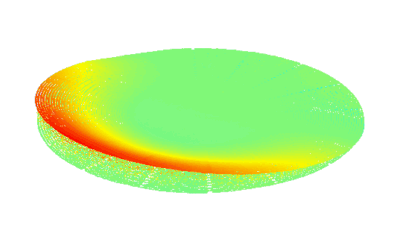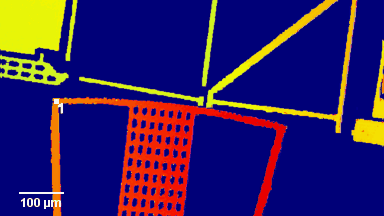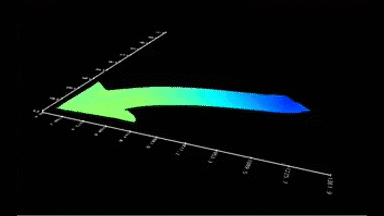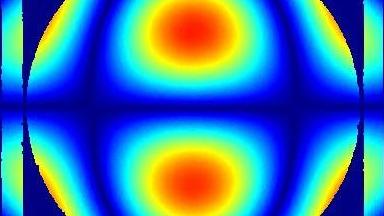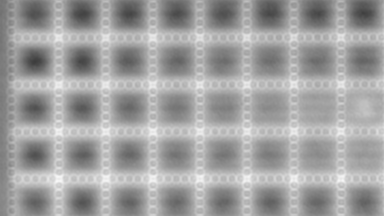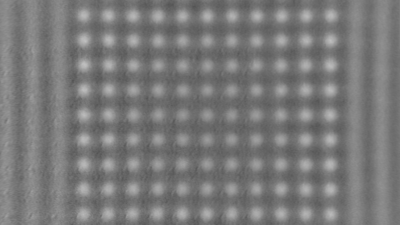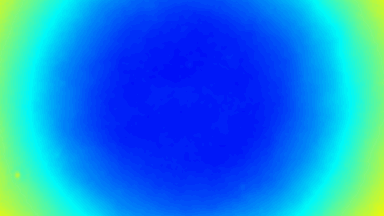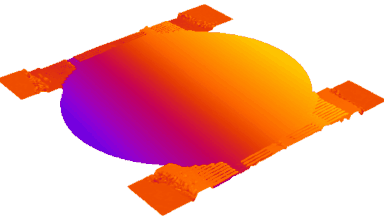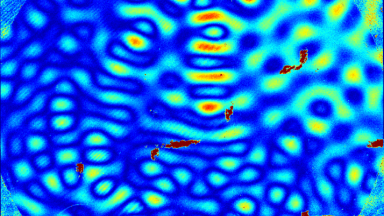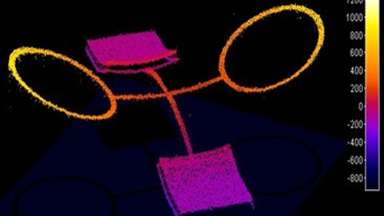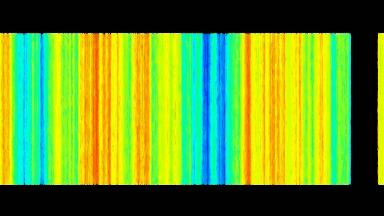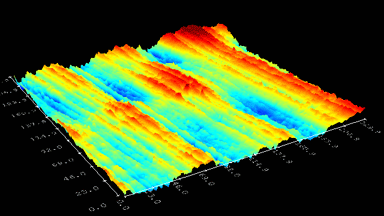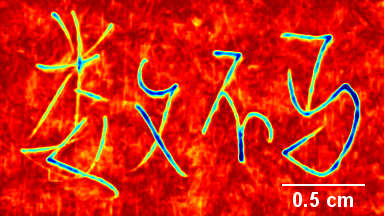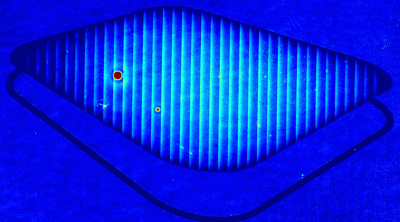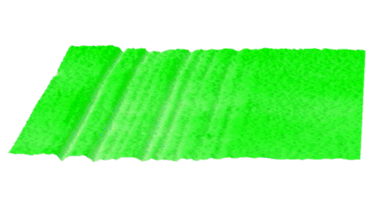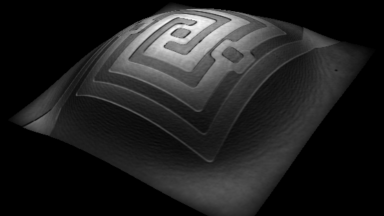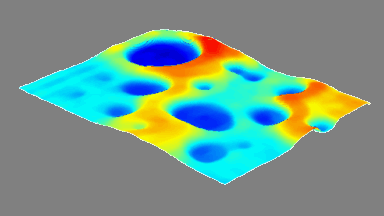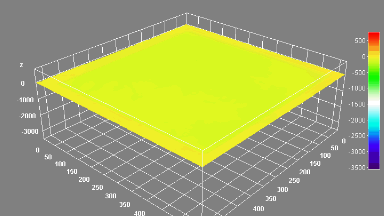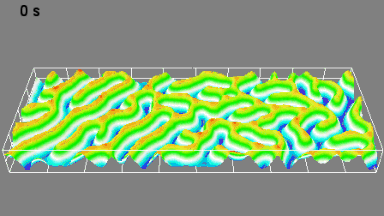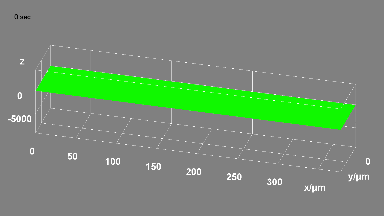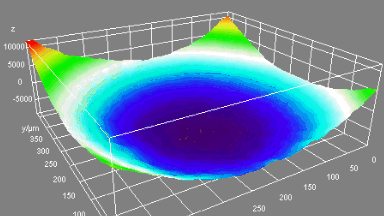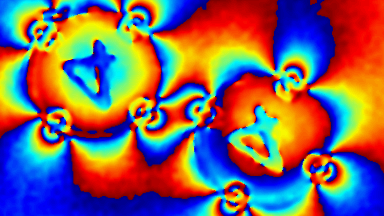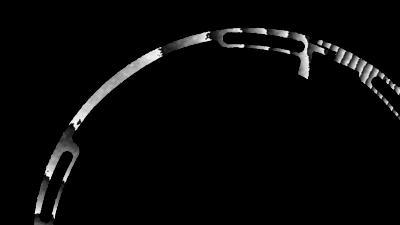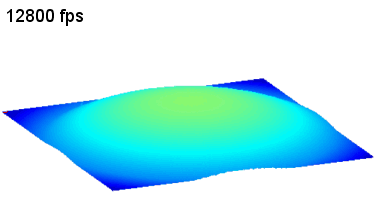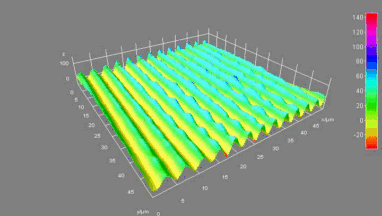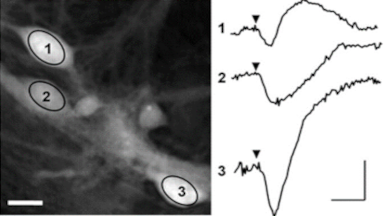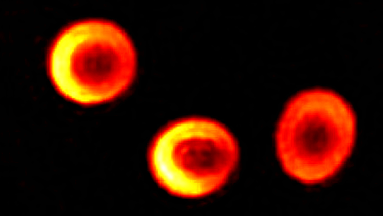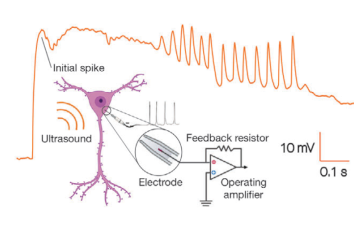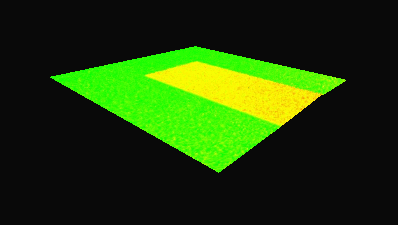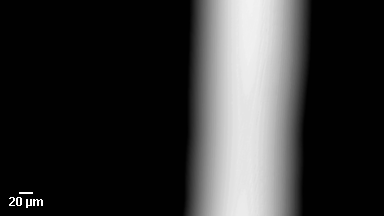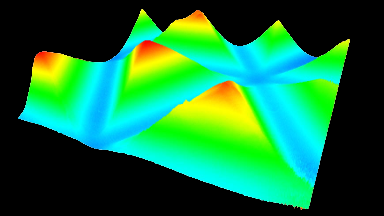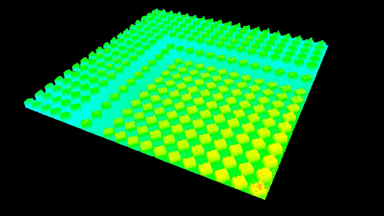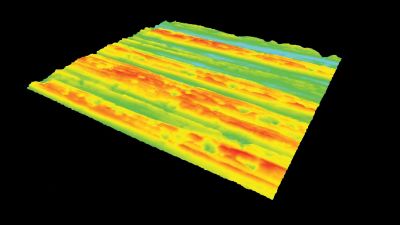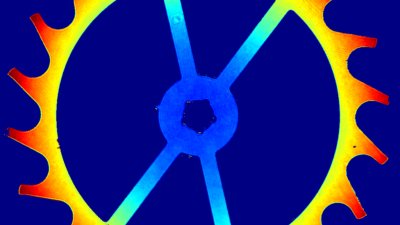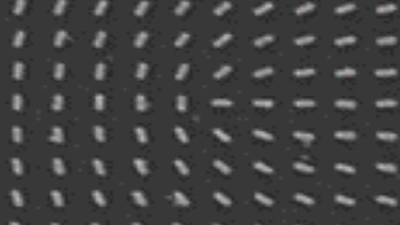In-plane resonator
A non-linear resonant tunable ring in-plane resonator
The moving part of a ring resonator consists of a spectacle-shaped structure attached to flexible arms that rotate in-plane around a vertical axis passing through its center.
Its resonant frequency can be tuned by adjusting its bias voltage. In this application, we investigate its in- and out-of-plane vibrations for increasing and decreasing excitation frequencies. It shows a non-linear response. The technical drawing of the resonator is shown on the right-top figure. The 3D displacement of the left ring at resonance is shown on the right-bottom figure. Both in- and out-of-plane displacement (phase jump displacements) are visible.
Description :
- Courtesy of : ENS Montreal, Canada
- Material : Silicon
- Instrument : DHM R-1000, 20x magnification
- Frequency range : 48-54 kHz
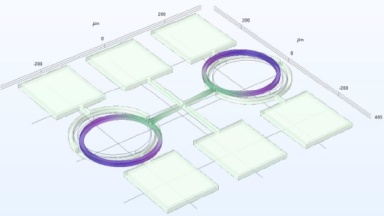
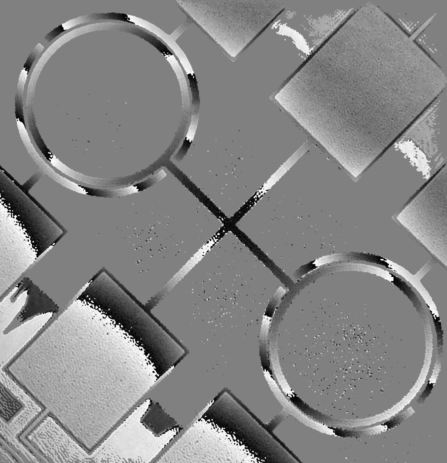
Full field in-plane amplitude analysis
In-plane frequency response is investigated using a fast full field analysis algorithm. It displays, automatically, at each frequency, the in-plane displacement between the extreme positions of the right ring over one period of excitation. The results is shown on the left picture, for an increasing frequencies sweep, between 48 and 52 kHz, by step pf 100 Hz.
This analysis can be performed without any assumption on the sample and without preselection of part of the sample, for increasing or decreasing frequencies sweeps. It is an automated full-field analysis.
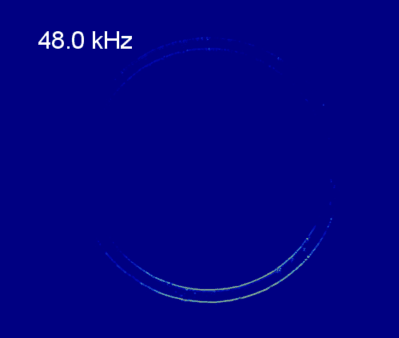
In-plane vibration analysis
The full field in-plane amplitude analysis, presented in the last paragraph, displays the difference between the two extreme positions.
The in-plane vibration analysis, presented in this paragraph, enables to track the position of the ring at any phase of its excitation signal, at any point of its trajectory. It is very useful to analyze for instance the occurrence of mechanical interference between MEMS two parts, that may prevent to reach the full displacement specifications.
The right figure shows the in-plane displacement of the top of the ring during a sweep of increasing frequencies. Vibration range between 0.1 and 1 micrometer, and the response is non-linear.
Such an analysis can be performed without any assumption on the sample, but requires the preselection of a portion of the sample.
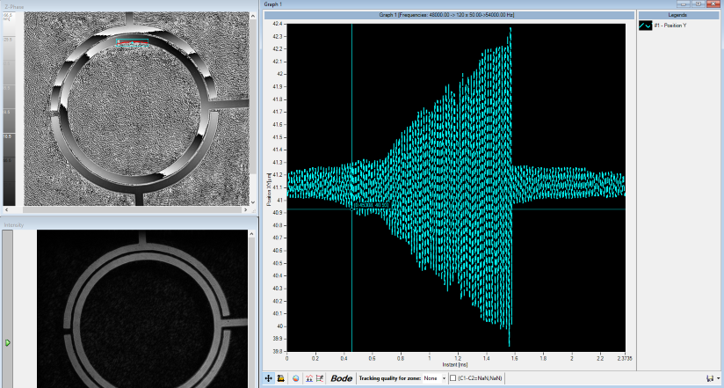
Out-of-plane vibration analysis
For performing a meaningful out-of-plane displacements analysis, the in-plane shifts need to be compensated, as presented on the left figure. This can be made either using the measurements shown here above, or by performing a XY registration of the moving rings.
The out-of-plane vibration maps versus frequency are shown on the left figure.
Read more about in- and out-of-plane displacement decorrelation.


